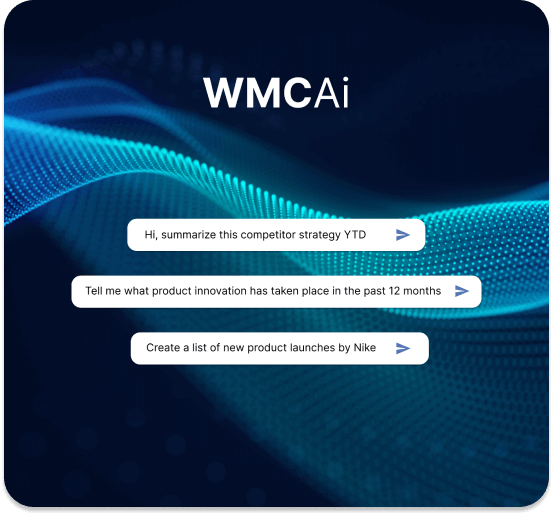Market research accounts for 7% of marketing budgets. And, despite the marketing budgets which it’s taken from being in decline, it’s continuing to grow.
Perhaps the main reason for its sustained popularity is the impact it can have on the bottom line. Three-quarters of companies that conduct market research regularly, for example, report an increase in revenue. While even those that conduct it infrequently report a 65% increase in revenue.
But market research is a multi-faceted practice. There are different types, each with their own methodologies and applications.
In this comprehensive guide, we’ll explore the 9 important types of market research in-depth and explore how organisations can use them to protect and grow revenue.

The Types Of Market Research That’ll Be Explored
1) Qualitative
2) Quantitative
3) Primary
4) Secondary
5) Descriptive
6) Exploratory
7) Causal market
8) Experimental
9) Syndicated mark
Understanding Market Research
Market research refers to the process of gathering and analysing data about customers, competitors, and market trends to gain insights and make informed business decisions. It helps businesses understand their target audience, identify opportunities, and develop effective marketing strategies.
It plays a pivotal role in the success of businesses across industries, guiding them through the ever-changing landscape of consumer preferences, competitive dynamics and economic shifts.
It empowers businesses with insights that reduce uncertainty and drive informed decision-making. Whether you’re a seasoned marketing manager seeking to refine your strategies or an aspiring entrepreneur embarking on a new venture, the knowledge of various market research methods is a valuable asset.
Here are the 9 different types of market research. Some you’ll have heard of, maybe even be familiar with, and others you possibly won’t. Our aim is to explain how each is performed and how they can be used.
1) Qualitative Market Research
Qualitative market research is an exploratory approach that delves into the underlying motivations, attitudes and perceptions of individuals or groups. It aims to uncover insights that quantitative data alone cannot provide, offering a richer understanding of consumer behaviour.
Methodologies
Interviews: Interviews involve one-on-one or group interactions with participants, allowing for in-depth exploration of topics. They provide a platform for open-ended discussions and personal insights.
Focus groups: Focus groups bring together a small group of participants to discuss specific topics. They encourage interaction and group dynamics, offering diverse perspectives.
Open-ended surveys: Surveys with open-ended questions allow respondents to express themselves freely, providing qualitative data that captures nuances in opinions and feelings.
Case studies: Case studies involve an in-depth examination of a single case or a small number of cases. They are valuable for exploring complex real-life situations.
When it’s useful: Qualitative market research is advantageous when you want to gain a deeper understanding of the “why” behind consumer behaviour, explore complex issues, or generate hypotheses for further research. It is particularly effective for early-stage investigations.
2) Quantitative Market Research
Quantitative market research relies on numerical data and statistical analysis to provide a structured and objective view of a subject. It involves surveys, questionnaires, experiments and structured observations to gather data from a large sample size.
Methodologies
Surveys and questionnaires: Surveys use structured questions to collect data from a large number of respondents. Questionnaires are self-administered surveys that are often used for standardised data collection.
Experiments: Experiments involve controlled scenarios where variables are manipulated to observe their effects. This method is essential for establishing cause-and-effect relationships.
Structured observations: Structured observations follow a predefined set of guidelines for data collection. Researchers systematically record data to ensure consistency.
Content analysis: Content analysis involves quantifying the content of documents, texts or media to identify patterns and trends.
When it’s useful: Quantitative market research is valuable when you need to measure and quantify trends, patterns, and correlations within a market. It is suitable for large-scale data collection and statistical analysis, providing conclusive insights.
3) Primary Market Research
Methodologies
Observations: Observations entail systematically watching and recording behaviours, events or phenomena. Researchers directly witness and document what is happening. This method is often used in fields like anthropology and psychology.
Interviews: Interviews involve one-on-one or group interactions with participants. Researchers ask questions and engage in discussions to gather information. Interviews can be structured (with predefined questions) or unstructured (more conversational).
Surveys: Surveys are a widely used primary research method that gathers data through a set of structured questions. They can be administered in person, via phone or online. Surveys are effective for collecting specific data from a large number of respondents.
Experiments: Experiments are controlled scenarios where researchers manipulate variables to observe their effects on a particular outcome. They are crucial for establishing cause-and-effect relationships.
When it’s useful: Primary market research is most valuable when you need data tailored to your specific research objectives. It’s ideal for addressing unique questions, exploring emerging trends or obtaining direct feedback from your target audience. However, primary research can be resource-intensive, so careful planning is essential to ensure its effectiveness.
4) Secondary Market Research
Secondary market research, also known as desk research, is the analysis of existing data and information collected by others. This method provides a cost-effective way to obtain a broader perspective on a market, although it may lack the specificity of primary research.
Methodologies
Sources: Secondary research sources include market reports, academic studies, industry publications, government publications and publicly available data. Researchers access these sources to gather insights.
Data analysis: Secondary research involves the analysis and interpretation of data that already exists. Researchers sift through available information to extract relevant findings and draw conclusions.
Applications: Secondary research is often used to understand market trends, industry benchmarks, historical data and competitor landscapes. It’s especially useful when comprehensive, up-to-date data is readily available.
Advantages: Secondary research is typically less time-consuming and less costly than primary research. It can provide a wealth of historical and background information, offering valuable context for your research.
Limitations: The data gathered through secondary research may not align precisely with your research objectives. Additionally, the quality and reliability of secondary sources can vary, so careful evaluation is essential.
When It’s useful: Secondary market research is beneficial when you need a broad overview of a market, historical data, or existing industry insights. It’s a practical starting point for research projects and can help you understand the context before considering more in-depth primary research methods.
5) Descriptive Market Research
Descriptive market research is a type of research that seeks to paint a full picture of market conditions and characteristics. It aims to provide a detailed account of the who, what, when, where and how of a particular market or phenomenon. Here’s an in-depth look at descriptive research:
Objective: The primary goal of descriptive research is to describe and document the characteristics, features, and details of a market or a specific phenomenon. It focuses on providing a comprehensive overview.
Methodology: Descriptive research employs various methods, such as surveys, observational studies, content analysis, and historical data analysis. These methods help gather information and create a detailed snapshot of the subject under investigation.
Applications: This type of research is used when a business needs to understand the demographics, preferences, behaviours, and other essential attributes of its target audience or market. It’s also valuable for benchmarking and comparing data over time.
Benefits: Descriptive research provides a rich source of information for businesses looking to understand their customers, markets or competitors better. It offers insights into current market conditions and helps in making informed decisions.
Limitations: While descriptive research is excellent for providing a comprehensive overview, it may not delve deeply into the underlying reasons or motivations behind observed phenomena. For in-depth insights, complementary research methods like exploratory or causal research may be needed.
When it’s useful: Descriptive market research is useful when a business wants to gather detailed information about its target audience, market trends, or industry benchmarks. It serves as a foundation for decision-making by providing a comprehensive understanding of the subject of interest.
6) Exploratory Market Research
Exploratory market research is a crucial step that often precedes other types of research. It aims to understand the deeper reasons, motivations and factors influencing a particular phenomenon. Here’s an in-depth look at exploratory research:
Objective: The primary goal of exploratory research is to explore and gain insights into a topic, issue, or phenomenon that is not well understood. It seeks to identify and clarify research questions and hypotheses.
Methodology: Exploratory research often uses qualitative methods such as in-depth interviews, focus groups, content analysis, and case studies. These methods allow researchers to gather rich, unstructured data that can uncover hidden patterns and insights.
Applications: This type of research is useful when a business encounters a new, complex problem or needs to understand a specific issue in-depth. Exploratory research can help identify potential solutions, develop hypotheses, and refine research questions.
Benefits: Exploratory research provides a foundation for further research by generating hypotheses and refining research questions. It helps researchers and businesses gain a deeper understanding of complex issues or emerging trends.
Limitations: While exploratory research is valuable for generating insights and hypotheses, it may not provide definitive answers or establish causal relationships. It’s typically a preliminary step in the research process.
When it’s useful: Exploratory market research is useful when a business faces a complex or poorly understood issue and needs to gather preliminary insights. It’s particularly valuable when the research questions are open-ended and require exploration before more focused research can take place.
7) Causal Market Research
Causal market research is a type of research that delves into cause-and-effect relationships between variables. It aims to determine whether changes in one variable directly lead to changes in another. Here’s an overview of causal research:
Objective: The primary goal of causal research is to establish causality, meaning it seeks to determine whether a specific variable (the independent variable) causes a change in another variable (the dependent variable).
Methodology: Causal research often involves conducting experiments, surveys, or observational studies. Experiments, in particular, allow researchers to manipulate the independent variable to observe its impact on the dependent variable.
Applications: Causal research is valuable when a business needs to understand the impact of a particular factor on an outcome. For example, it can be used to determine whether a change in pricing directly affects sales or if a new marketing strategy causes an increase in customer retention.
Benefits: Causal research provides concrete evidence of cause-and-effect relationships, which can guide decision-making. It allows businesses to make informed changes based on empirical data.
Limitations: Conducting causal research can be resource-intensive, particularly when experiments are involved. Additionally, ethical considerations may limit the extent to which researchers can manipulate variables.
When it’s useful: Causal market research is useful when a business wants to go beyond correlation and establish a direct cause-and-effect relationship between variables. It’s employed when the need for evidence of causality is critical for decision-making.
8) Experimental Market Research
Experimental market research is a specific type of research design that involves conducting experiments to gather data and establish cause-and-effect relationships. Here’s a closer look at experimental research:
Methodologies
Objective: The primary objective of experimental research is to examine cause-and-effect relationships between variables. Researchers manipulate one variable (independent variable) to observe its impact on another variable (dependent variable).
Methodology: Experimental research is characterized by the use of controlled experiments. In these experiments, researchers control and manipulate one or more variables while keeping other variables constant. This control allows them to isolate the effect of the independent variable on the dependent variable.
Applications: Experimental research is valuable when a business or researcher wants to determine the direct impact of a specific intervention or change. For example, a company might conduct an experiment to test the effectiveness of a new advertising strategy on sales.
Benefits: Experimental research provides strong evidence for causality because it involves controlled manipulation of variables. It allows researchers to draw clear cause-and-effect conclusions.
Limitations: Conducting experiments can be resource-intensive, and it may not always be feasible to control all variables in real-world situations. Ethical considerations, such as the need for informed consent, also come into play.
When it’s useful: Experimental market research is most useful when there’s a need to establish a direct cause-and-effect relationship between variables. It’s often employed in scientific research and clinical trials but can also be applied in business settings to test hypotheses and make informed decisions.
9) Syndicated Market Research
Syndicated market research plays a unique role in the world of market research. Here’s a comprehensive look at syndicated research:
Objective: Syndicated research aims to provide valuable market insights by collecting data on various industries, markets, and consumer behaviours. Unlike other forms of research, syndicated research is not typically conducted for a specific client but is rather funded and conducted by research firms independently.
Methodology: Syndicated research involves gathering data through surveys, interviews, and data analysis on a continuous basis. Research firms often collect data from a diverse range of sources, including businesses, consumers and government agencies.
They compile this data into reports, databases, or publications, which are then made available to subscribers or clients.
Applications: Syndicated research is frequently used by businesses, investors, and industry professionals to access comprehensive and up-to-date market information. It can be invaluable for understanding market trends, competitor landscapes and consumer preferences.
Companies can subscribe to syndicated research reports to gain insights into specific industries or markets.
Benefits: Syndicated research offers a cost-effective way for businesses to access high-quality market information without having to conduct their research. It provides timely and reliable data that can inform strategic decisions, marketing strategies and investment choices.
Limitations: While syndicated research provides valuable insights, it may not always align perfectly with a specific business’s needs or objectives. The data may also be less customisable compared to custom research projects.
When it’s useful: Syndicated market research is useful for businesses seeking comprehensive market intelligence and insights without the need for conducting their research. It’s particularly beneficial when exploring new markets, assessing industry trends or making informed investment decisions.
Final Thoughts About Different Types Of Market Research
Understanding the different types of market research and their applications is essential for businesses and professionals looking to make informed decisions, understand consumer behaviour, identify opportunities and stay competitive in today’s dynamic markets.
By choosing the right research methods and techniques that align with their objectives, organisations can unlock valuable insights to drive growth and success.
The knowledge of these research methods can be a powerful tool in your decision-making toolkit. By staying informed and adopting a research-driven mindset, you can navigate the complexities of the business landscape and position yourself for success.
.








